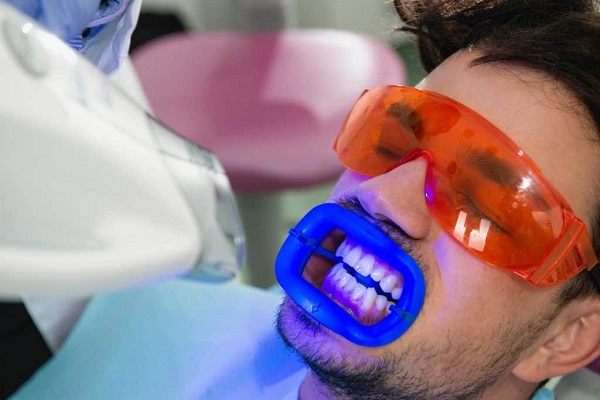
Introduction to Teeth Whitening
In the quest for a radiant smile, teeth whitening has become an indispensable solution. Whether you’re preparing for a big event or simply want to boost your confidence, teeth whitening promises a brighter, more youthful appearance. From in-office treatments with instant results to the more leisurely approach of at-home kits, there's a whitening option for everyone. But while the methods vary, the goal remains the same: to break down stains and lighten the natural color of the teeth without compromising the tooth structure.
Professional in-office whitening uses stronger bleaching agents like hydrogen peroxide, offering rapid, noticeable results. At-home kits, while more budget-friendly and convenient, may take a bit longer to show significant effects. Regardless of the method, both aim to tackle the common culprits—extrinsic stains from food, drink, and tobacco—as well as the more persistent intrinsic stains embedded deep within the tooth.
How Teeth Whitening Works
At Sparkly Whites, Teeth whitening is especially effective at tackling extrinsic stains, which result from everyday indulgences like coffee, tea, red wine, and smoking. These stains reside on the surface of the tooth and can be broken down fairly easily with the right bleaching agents.
Intrinsic stains, on the other hand, are lodged within the tooth structure itself. These are more stubborn and might not fully respond to whitening treatments. To address this, bleaching agents such as hydrogen peroxide penetrate the tooth enamel, breaking down discolored molecules and lightening the overall tooth color.
For professional whitening treatments, the results can often be seen in just one session, while at-home treatments typically take several weeks of consistent use.
What About Crowns and Fillings?
One common misconception is that teeth whitening treatments can lighten dental crowns and fillings. Unfortunately, this isn't the case. Unlike natural tooth enamel, materials used in dental restorations—such as porcelain, metal, or composite resin—don’t respond to bleaching agents the same way.
While the natural teeth around a crown or filling may whiten, the restoration itself will remain unchanged. Some tooth-colored fillings and veneers may show slight improvements if surface stains are removed, but the underlying color of these materials remains the same. This can lead to an unfortunate mismatch, leaving your restored teeth noticeably darker than your newly brightened smile.
If you've recently undergone a whitening treatment and find the discrepancy unsettling, replacing the restorations may be necessary to achieve a uniform look. This added step could potentially increase the overall cost of achieving that perfect smile. If you're aiming to enhance your smile further, Achieve Your Dream Smile with Laser Teeth Whitening could provide a more dramatic result for your natural teeth, though it's important to plan any restorative work carefully to avoid mismatched colors.
Consulting with Your Dentist
If you have dental crowns or fillings and are considering teeth whitening, a consultation with your dentist is essential. Your dentist can evaluate the materials of your existing dental work and help determine whether replacing them is necessary. In some cases, your dentist may recommend replacing older restorations with newer, whiter materials to maintain a consistent and bright smile.
Other cosmetic procedures, such as dental bonding or veneers, can be used to refresh the color of your restorations without the need for complete replacement. These alternatives can create a more harmonious look, blending seamlessly with your natural teeth.
Potential Risks and Considerations
Teeth whitening is generally safe, but there are a few caveats to consider. Aggressive treatments, particularly those with high concentrations of bleaching agents like hydrogen peroxide, can lead to tooth sensitivity or even alter the tooth’s microstructure. When exposed to powerful bleaching agents, restorations could weaken, potentially impacting their longevity.
Additionally, strong whitening agents may cause surface demineralization, affecting the enamel's strength and appearance. Light-activated bleaching treatments have shown mixed results. Some studies suggest that while these treatments may increase sensitivity, they don’t always lead to the expected improvements in whitening or color stability.
Maintaining Your Bright Smile
Once you've achieved your desired level of whiteness, maintaining it is key—especially if you have dental restorations. A solid oral hygiene routine, which includes regular brushing and flossing, is essential. Avoiding staining substances like coffee, tea, and red wine will also help keep your smile bright for longer.
To prolong the effects of your whitening treatment, your dentist may recommend periodic touch-up treatments or whitening products designed to maintain the results. These can help ensure that your smile stays radiant without the need for constant treatments.
Alternative Options for Restorations
If traditional whitening methods don’t work for your restorations, don't fret—alternatives are available. Modern dental materials and techniques have evolved to provide cosmetic solutions, such as veneers or crowns made from materials that more closely mimic the look of natural teeth. These materials can be more receptive to whitening, ensuring that your restorations blend seamlessly with your natural smile. Go to Homepage
Conclusion
Teeth whitening can work wonders for enhancing the natural brilliance of your smile. However, it’s important to understand that while whitening treatments are effective for natural teeth, they do not work on dental restorations like crowns, fillings, or veneers made from porcelain or metal.
To achieve a balanced, uniform smile, it’s essential to consult with your dentist. They can guide you through the process, offering solutions that address both your natural teeth and any existing restorations, ensuring a smile that’s not only brighter but also beautifully cohesive.
